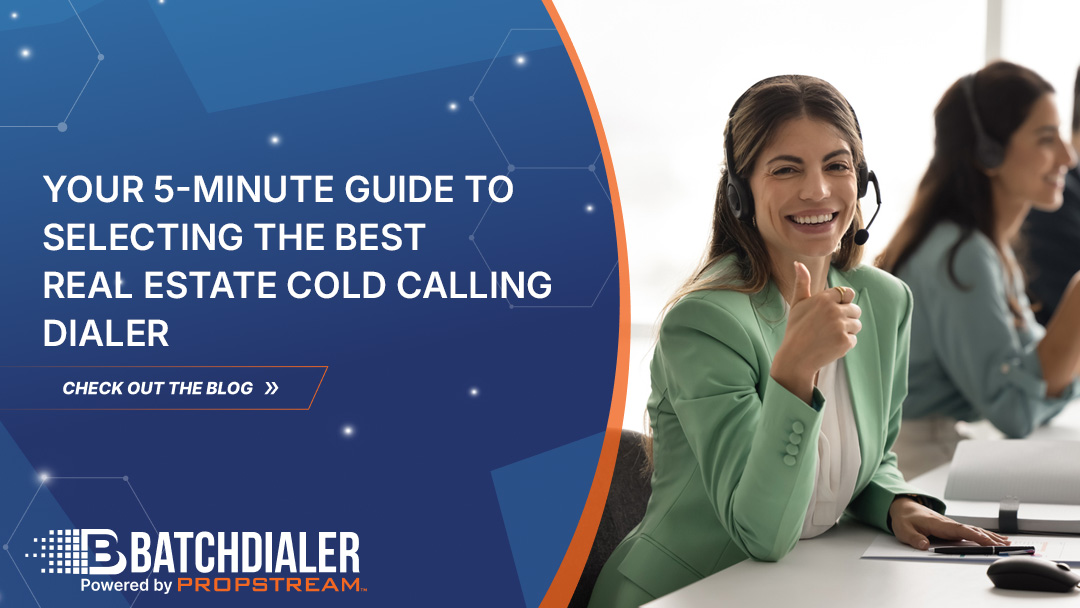For cold callers, it’s common to hear people’s objections. Speaking to uninterested parties is inevitable, but cold callers have tools that can help convert that “no” into a “yes.”
Before we discuss the specifics of how to handle cold calling objections, it’s important to note that the best way a cold caller can set themselves up for success is to work on their cold calling script, approach, and delivery. Simply being able to have a conversational ease on the phone will reduce the number of cold calling objections you’ll experience.
You will still have some people who have a knee-jerk reaction to end any type of cold call. Fortunately, there are many people who will be open to hearing what you have to say. Here are some tips for communicating with them:
- Describe your product or service as a solution to their needs early in the call by asking a few establishing questions to prime them for the value props you have lined up
- Speak clearly and maintain a low-pressure approach to your pitch to avoid seeming pushy
- Respond to questions thoughtfully, even if you have rehearsed and prepared answers
- Remember to be conversational with your delivery, because listeners are more responsive when it doesn’t sound like you are just repeating a script
Cold calling has a high turnover rate, so your goal is to get through the objections as often as possible. You may have an off day or a streak of really stubborn refusals. To figure out whether your approach needs more finessing, track the success rate of your scripts over a few weeks to determine which ones perform better and which ones need work.
Before we dive into the top three cold calling objections and how to handle them, it’s helpful to understand the process for overcoming cold calling objections in general.
Steps to Handle Common Cold Calling Objections
Step #01: Listen
You can’t handle an objection if you aren’t listening to what the prospect has to say. Instead of jumping in with a response or cutting the prospect off, listen closely so that you can understand their concerns. If they feel listened to, they’re more likely to listen to you. This dynamic will increase the chances of conversion.
Step #02: Understand
Listening and understanding go hand in hand, but you may get someone on the phone who’s distracted or inarticulate and isn’t expressing themselves clearly. It can be extremely helpful to paraphrase and repeat back your prospect’s concerns to show that you’re listening to them and ensure that you understand each other.
Step #03: Respond
Whether or not the concerns sound like a serious issue, you need to acknowledge that they are valid. If your prospects feel like you’re not paying enough attention to their problems or trying to ignore them, they are unlikely to get converted. If you’re able to handle the issue or respond to their question yourself, plunge in, and if you’re unable, connect them with someone who can address their issue or explain that you’ll get back to them with a solution.
Step #04: Confirm
Once you’ve demonstrated that you understand their objection and have responded to it, confirm that their issue is one that can be overcome. Once you’ve demonstrated your empathy and problem-solving, your prospect will be much more likely to commit to your product or service.
So those are overall strategies. Now let’s examine the three most common sales objections and the best rebuttals to get closer to the sale.
Cold Calling Objections and the Best Rebuttals
Every cold calling objection is essentially a way for the person on the other end of the line to end the call, so your rebuttals will be variations on ways to keep the conversation open. Many rebuttals work for more than one objection if you customize your approach a bit. An effective tactic is to ask questions so you can hone in on the exact reasons behind the objection.
- That sounds like it must be hard. Could you tell me about what’s been challenging you?
- It’s okay if you aren’t interested, but could I ask some questions about why to help me do better on my next call?
- Which parts of what you’ve heard fall short for you? Can I ask that before you go?
- That’s something I can help with
That last response must be followed with a value prop or explanation that relates your goals to the call recipient’s stated obstacles to working with you. It isn’t necessarily something you can always do. Instead, it may be an explanation of something they misunderstood or a partial solution to a problem. Still, it is a powerful move when you can follow through with helpful information.
Objection 1: Price Objections
The most common objection is related to pricing. The idea is always the same, but the objections can be worded in various ways, such as:
- “It’s too expensive.”
- “We don’t have money.”
- “We have already spent our budget.
- “The product is great, but it’s too costly.”
How to Handle Such Objections?
Whenever a prospect has a price-related issue, pause for a moment as they might volunteer some more details unprompted. And once they finish it, zero in by asking a few questions to show your concern.
Try to dig into what makes the prospect think that your products or service is unaffordable or not worth the cost. You’ll often find their issue is more of a vague feeling than anything concrete. In this case, a few hard facts may help put their mind at ease. Tell them what sets your products apart and why they should consider them instead of other options.
If the prospect is still not convinced, put the price in context. This can be especially influential when it’s framed in return on investment. An example of this would be, “This product has paid for itself with our clients who saw a 6% increase in revenue.” Once the client understands the value your service is providing; the price will be less of a problem.
Objection 2: Not a Good Fit
When a prospect says your product or service is “not a good fit” it can be disappointing. It’s a polite way of stating that they’re not interested. Some other versions of “not a good fit” are:
- “We can’t implement this solution.”
- “This product doesn’t fit in our system.”
- “I don’t understand how your product would benefit us.”
How to Handle Such Objections?
To effectively tackle such objections, ask questions to understand in-depth what’s holding your prospects back. Once you’ve gained some experience, you can use some well-rehearsed responses to their objections. You could also tell them about other clients who had similar objections but are now satisfied customers.
Objection 3: Not Interested
These are pretty similar to the last objection, but the only difference is that these objections aren’t couched in politeness. When prospects say that they aren’t interested, it simply means that they have at least one solid reason for not buying.
Some of the specific objections related to “Not Interested” include:
- “We would be interested if you add some more features.”
- “Your product/services are a fad and will be obsolete.”
- “I am satisfied with my current product/services.”
- “I can’t see how your products can help me.”
How to Handle Such Objections?
To handle these particular cold calling objections, you have to have some real, concrete reasons to prove their perceptions wrong. As the person cold calling, you should be able to offer some bullet points for why your product or service is more valuable than they think it is. Convince them to change their perspective on that one thing they’re fixating on, so the call flows back in your favor.
Key Takeaways
The responses we’ve outlined can be used in most cases, but they won’t work if you sound rushed or scripted. The more you practice, the better you’ll be at cold calling and converting.
While it’s good to have a general framework for handling cold calling objections, it’s likely that there are going to be recurring objections that are specific to your product. Asking your colleagues if they’ve faced the same objections and how they’ve handled them will help prepare you.
Another way to prevent cold calling objections before they occur is to practice phone list scrubbing to ensure that your phone list is current. This will eliminate disconnected numbers, the numbers of people who have already been called, or people are on the Do Not Call Registry.
Despite its obstacles, cold calling remains an effective way to pursue leads. Knowing how to communicate effectively and handle cold calling objections will help you convert those leads to customers.



